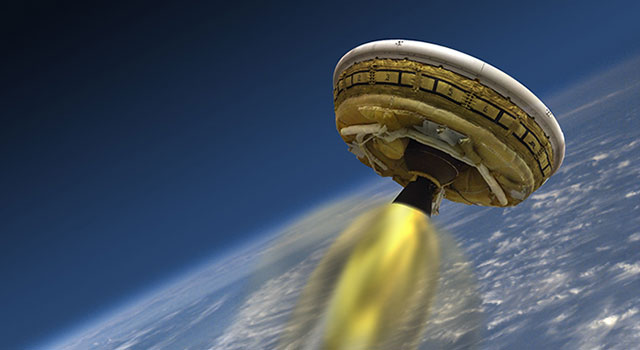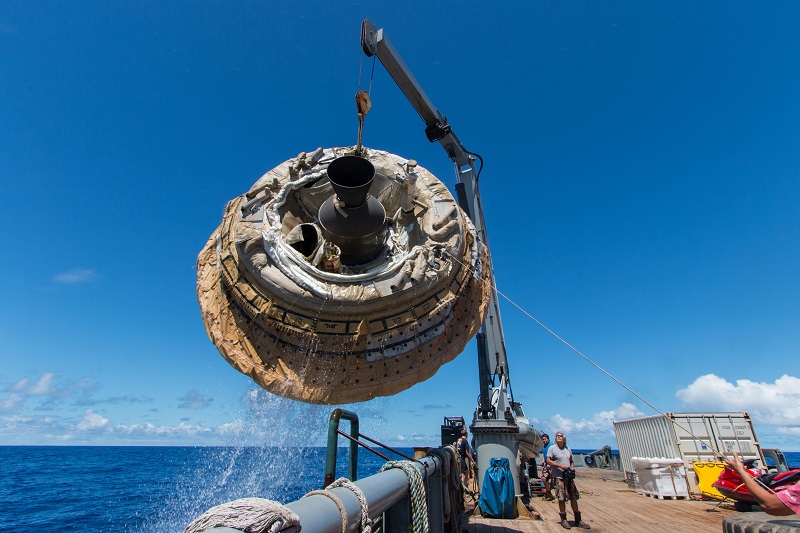
Widely regarded as one of the best things to stem out of the United States in the 20th century, NASA is on the forefront of innovative technology. The space agency’s most recent testing of the flying saucer-like Low-Density Supersonic Decelerator (LDSD) ended successfully, ensuring that heavier payloads can be successfully delivered during future space missions to Mars.
On June 28, 2014, the LDSD was launched from the U.S. Navy's Pacific Missile Range Facility in Kauai, Hawaii, using a high-altitude balloon similar to the one recently tested by World View on June 18. But instead of carrying a passenger cabin, NASA’s balloon carried the LDSD payload up to an even greater height of 180,000 feet. Once the balloon separated from the LDSD at a height of 120,000 feet, built-in booster rockets propelled the saucer-like device an additional 60,000 feet up to an elevation nearly devoid of any atmosphere.
At 180,000 feet above ground, the atmosphere closely resembles that of Mars, allowing NASA to test new technology’s ability to withstand the destructive forces of the downward descent toward the red planet. The new systems are a major upgrade in our capacity to land, representing the first major advancement in parachute technology since the 1970s.

NASA's LDSD landed in the Pacific Ocean on 11:05 AM on June 29, 2014.
To create enough drag and safely land from such a high altitude, LDSD deployed the Supersonic Inflatable Aerodynamic Decelerator (SIAD), a donut-like inflatable Kevlar tube responsible for slowing the craft from supersonic speeds greater than Mach 3.5 down to Mach 2. Subsequently, the LDSD released a second experimental technology in the form of a gigantic 110 feet diameter parachute called the Supersonic Disk Sail Parachute (SDSP). SDSP created enough drag to slow the downward descent even further, reducing it from Mach 2 to a measly 175 miles per hour, enabling the saucer’s own thrusters to take over and safely land the vessel.
This experiment is but one in a series of three designed for the LDSD project. The test was exclusively designed to measure the LDSD’s ability to maneuver the payload, but it deployed the SIAD and SDSP as a bonus, given how well the first part of the experiment performed.
“Because our vehicle flew so well, we had the chance to earn 'extra credit' points with the Supersonic Inflatable Aerodynamic Decelerator [SIAD],” said Ian Clark, principal investigator for LDSD at JPL. “All indications are that the SIAD deployed flawlessly, and because of that, we got the opportunity to test the second technology, the enormous supersonic parachute, which is almost a year ahead of schedule.”
We can expect the saucer-shaped vehicle to appear two more times in next round of experiments.
Via NASA.Gov
Advertisement
Learn more about Electronic Products Magazine





